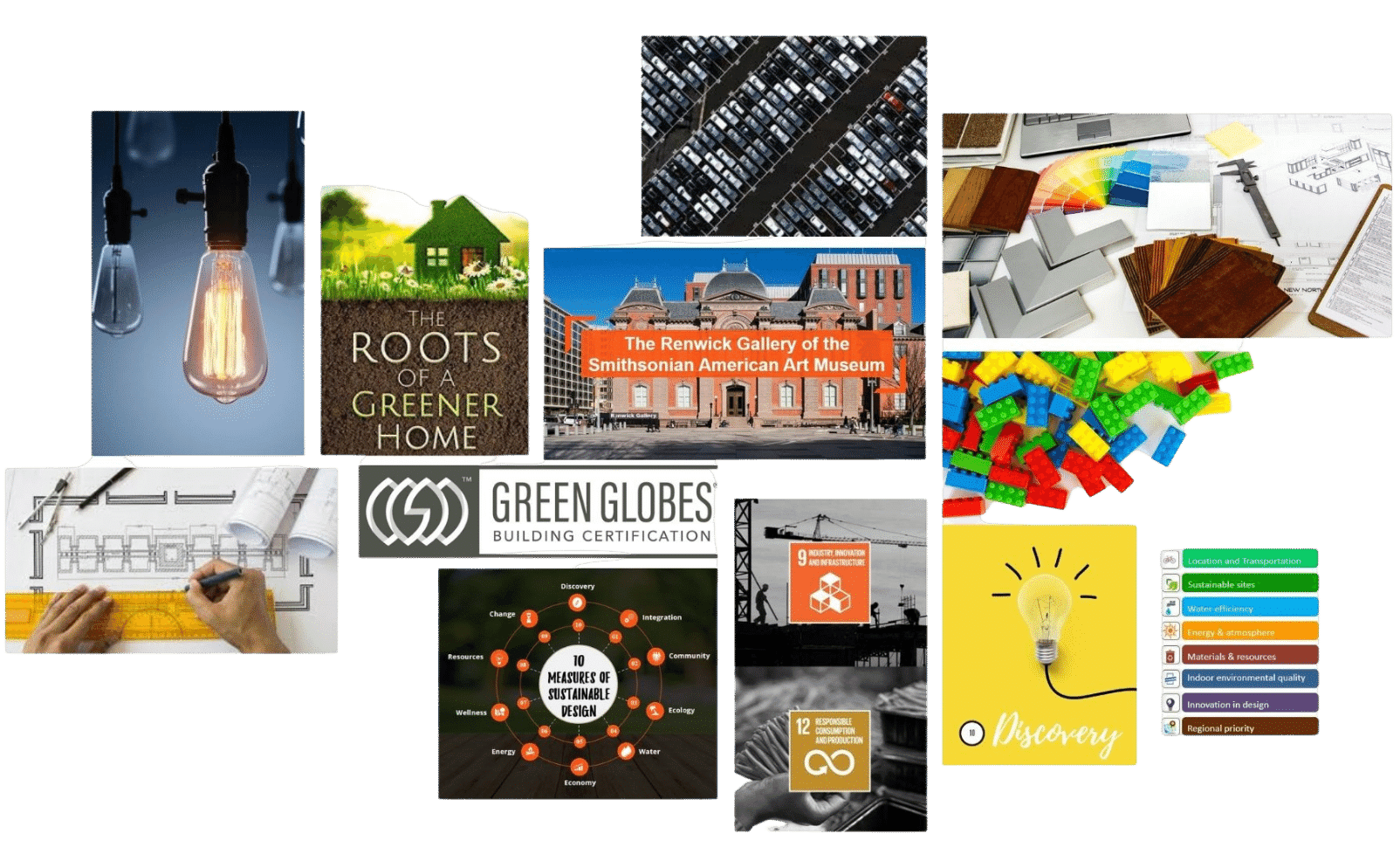The WELL Building Standard stands at the forefront of a global movement that aims to reshape our built environments with a focus on human health and overall well-being. As we rapidly urbanize and modernize, the spaces we live and work in play a significant role in influencing our health, mood, and productivity. This module takes you on an insightful journey into the very heart of the Materials concepts and the significance of the Innovation concept.
Understanding the materials, we use in constructing and designing buildings goes far beyond their visual appeal or structural integrity. Every material has a story, and in this module, we delve deep into its narrative. Learn about the intricate web of chemicals and compounds, their interactions, and the subsequent impact on human health throughout a building’s lifecycle.
From source to disposal, every phase of a material’s life presents both opportunities and challenges. By delving into the science, best practices, and innovative solutions surrounding materials, this course equips participants with the knowledge to make informed decisions in design, construction, and maintenance. As architects, designers, and builders, the choices we make can either perpetuate a cycle of environmental degradation and health risks, or they can foster resilience, health, and sustainability.
Moreover, the Materials Concept Module is a proud part of GBRI’s WELLopedia Series, offering a panoramic view of the WELL Building Standard v2. Whether you’re looking for an in-depth understanding of a specific concept or aiming to broaden your perspective across the spectrum of the WELL Building Standard, this course caters to both. Enroll as a stand-alone endeavor or immerse yourself in the entire series, depending on your learning aspirations and credential maintenance needs.With the escalating global awareness of the intrinsic bond between the built environment and human health, it’s imperative to champion innovative solutions for sustainable and health-centric habitats. Our exploration of the Innovation segment will enlighten you with cutting-edge methods and strategies, sparking inspiration for cultivating healthier living and working spaces.Dive deep into the acclaimed WELL Building Standard, a forefront framework emphasizing human health and well-being in the phases of building design, construction, and operation.
This course is an integral part of GBRI’s WELLopedia Series, shedding light on the intricacies of the WELL Building Standard v2. Whether you’re pursuing standalone insights or integrating this as part of the broader series for credential maintenance, this course is tailored to meet your needs.Join us, as we unravel the world of materials and innovation and together, let’s pave the way for healthier, more sustainable living spaces for generations to come.
Learning Objectives:
Upon completion of the Materials and Innovation Concept Module, participants will be able to:
- Understand the importance of materials in the WELL Building Standard, especially their effects on health and the environment.
- Recognize the challenges posed by chemicals like lead, asbestos, mercury, CCA, and PCBs in construction.
- Learn measures to minimize or eliminate exposure to harmful building materials.
- Prioritize sustainable material selection, avoiding toxic and persistent substances.
- Apply best practices in material selection and use, aligned with the WELL Building Standard.
- Grasp the foundational principles and relevance of innovation within the WELL Building Standard framework.
- Investigate multifaceted health interventions and their pivotal roles in sculpting health-centric built environments.
- Discern the congruencies and variances between the WELL Building Standard and the LEED rating system.
- Immerse in the key principles and methodologies for designing spaces that balance environmental sustainability with human well-being.
- Acknowledge the vitality of ongoing education and active participation, spotlighting building tours, WELL Certified spaces, and the integral role of WELL APs during certification.
- Empower learners with the expertise and resources to adeptly maneuver through the WELL Scorecard, ensuring a thorough comprehension of the WELL certification trajectory and its gradations.
Keywords:
Innovation Concept, WELL Building Standard, Architectural Advancement, Health-centric Strategies, Feature I01: Innovate WELL, IWBI, Health and Well-being, Built Environments, WELL Accredited Professional (WELL AP), Experience WELL Certification, Gateway to Wellness, Green Building Rating Systems, Sustainability, Building Design and Operations, Architectural Paradigms, WELL v2 Features, WELL Certification Process, Environmental Sustainability, Building Occupants and Visitors, Building Tours, Architectural Design and Health, Wellness Programs, Physical Project Space, Project Planning and Achievement, Third-party Wellness Programs. Materials concept, Human health, Environmental sustainability, Hazardous building materials, Sustainable practices, Material selection, Toxic substances, Bioaccumulation, Legacy chemicals, Asbestos, Mercury, Lead, CCA (Chromate Copper Arsenate), PCBs (Polychlorinated Biphenyls), Indoor air quality, Material Restrictions, Material Transparency, Material Optimization, VOC Restrictions, Site Remediation, Waste Management, Pest Management, Pesticide Use, Cleaning Protocols, Integrated Pest Management (IPM), WELL feature, WELL Certification, Building materials, Health impacts, Air concept, GBRI’s WELLopedia Series, Pathogens, Contact Reduction, Contaminated surfaces, Respiratory particles.








